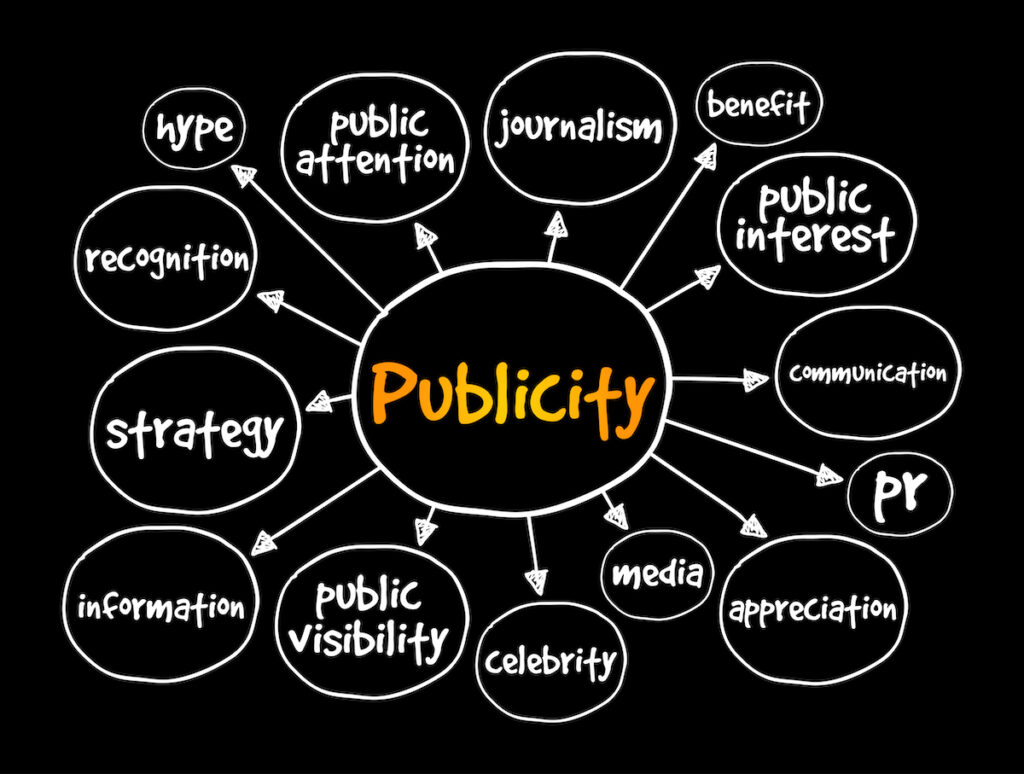PR Is More Important to Brand Exposure Than You Think

Image is everything. That’s why businesses spend so much time crafting their brands. A reputation can change in the blink of an eye with just one experience.
Building a brand takes consistent effort, both through brand exposure and reputation management. It’s not something that comes without work and can cost you business if left to chance. A PR strategy helps to build and maintain a positive image to the public. It helps gain exposure to prospects and clients that wouldn’t occur through direct channels.
This can work well no matter what size of business you own. It’s one of the easiest ways to level the playing field between you and your larger competitors. If done right, PR exposure can give you more of a marketing boost than you’ll ever receive with paid advertising. To do it right requires a plan.
How PR Exposure Excels Over Marketing
Public relations is one of the most misunderstood aspects of marketing. It all starts with the approach. With a marketing campaign, you begin with a distinct goal in mind that might include driving more traffic to a website or increasing your sales.
A PR campaign may achieve the same results, but it occurs differently. Your goal would be more of a big-picture strategy built around showcasing your brand. The message must appeal to the media, giving them a story that the public and intended audience will find fascinating. It’s a way to open up your brand to people who may never have considered you before.
When you advertise, you have highly defined control. You can control your message’s timing, format, content, size, and display. You own the when and where and can change it on a dime as often as you like. On the other hand, PR exposure is determined by the media that picks up the story. They have ultimate control over when it’s printed or used. You’ll reap the rewards based on their timing.
People are more skeptical than ever about advertising. Ad spending is expected to reach over $700 billion in 2023, producing millions of ads, thousands of which a person sees every day. Most of those ads are overlooked. People don’t have the brain capacity to process them all. This means it’s increasingly challenging to depend on them to fully reach their highest potential.
With marketing, you choose the route to get to the final sale. While people still shop for products, they become faithful to brands. If you want to create a forever customer, PR exposure will help you do it.
Get to Know the Different Types of Media
While you might not get to choose when and where you receive coverage, you can target the media channels that make the most sense for your business. Media typically falls into three categories:
- Owned
- Paid
- Earned
Owned
When you create content, you own it and control it. However, if you’re creating content on purpose, your goal is getting others to like and share it.
Some content is more shareable; that’s why social media is so beneficial. You can create:
- Blog posts
- Reports
- Guides
- Infographics
- Videos
- Graphics
- Photographs
They have value for others. You control how it’s created and when used as a part of the PR process, it can further strengthen your brand.
Paid
Want more control over your PR potential? Paid PR exposure improves visibility while allowing you to target where your content is displayed. Both social media ads and pay-per-click campaigns fall into the paid PR category. Influencer marketing is also a growth strategy.
People trust “friends” more than companies or top celebrities. They want to be part of the “in” crowd they follow. Sixty-one percent of respondents stated they trusted influencer recommendations. That’s considerably higher than 38 percent who trust branded social media content.
Incorporating paid media into your overall PR strategy helps you define a specific group of people who fit within the target audience. They’ll help you deliver the right message in the right way at the right time.
Earned
Earned media is out of your control. It’s based on your brand and your reputation, often created through press releases, or working with outreach to attempt to gain publicity.
Many of the most significant sites out there are looking for quality content daily. They write stories, create shows, or produce helpful guides. Let’s say a travel site reviews one of your newest pieces of luggage. If they give it five out of five stars, that’s positive publicity. You’ve earned it by being a reputable brand that produces high-quality products.
Earned PR can also go the other way. If a disgruntled customer has something terrible to say, it can easily get picked up and shared with millions. That’s a negative slant that impacts your brand, and you’ll have to deal with the exposure one way or the other.
PR Strategies – How To Get Prepared
Whether you work with a firm or develop a PR strategy for yourself, there are a few things you can do to guide you to success.
- Define your audience: Like all marketing campaigns, the better you understand your demographics, the easier it will be to reach them. If you’re starting from scratch, define one ideal customer. You want to dig deep and learn as much as you can about likes, interests, and attitudes.
- Get organized: A good PR strategy will also be organized and applied by seasons. What will you do each month to reach out to your target audience? Build a carefully constructed list of media, influencers, opinion leaders, customers, and collaborators willing to partner with you.
- Do your research: Research is an essential part of PR exposure. This gives you a chance to carefully define your market, understand your competition, and create ways to inspire all who follow your brand.
- Enhance your online presence: No matter your business, your digital presence controls your entire brand’s reputation. This extends beyond your website and other resources you own. You risk losing control if you aren’t following what other sites say about you.
- Work with a team: There are many pieces to a good PR campaign. It requires the production of the assets, strategic placement, and follow-up to help with feedback. The only way to learn, grow, and build a more successful campaign is to track every step along the way.
Get started today by enhancing your brand’s exposure by building a target PR campaign. InnoVision would be happy to help with whatever your marketing needs might be. Just contact us through our website and see what we can do for you.

















